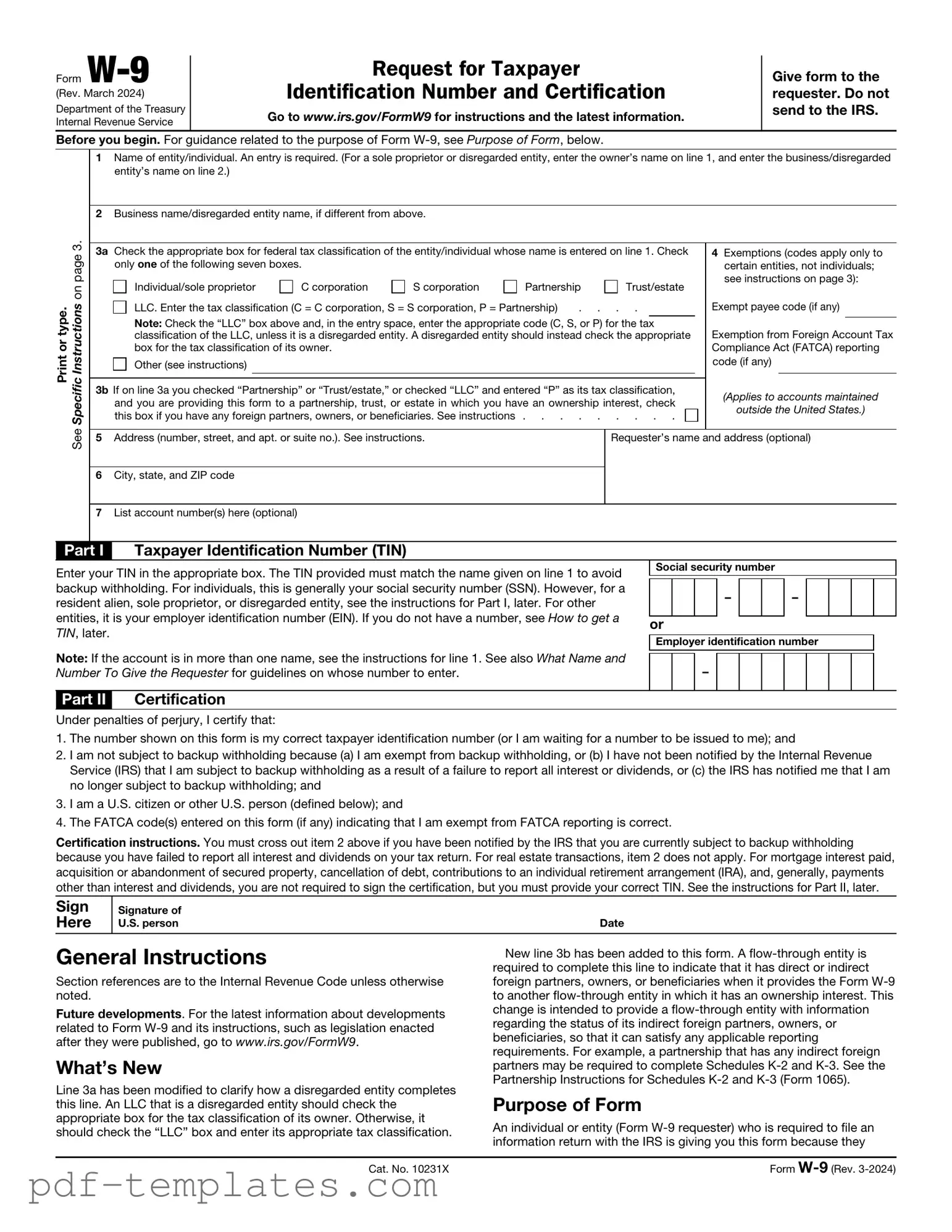The IRS W-4 form is often compared to the W-9 because both are used to gather information about individuals for tax purposes. While the W-9 is used by independent contractors and freelancers to provide their taxpayer identification number to clients, the W-4 is filled out by employees to inform their employer about how much federal income tax to withhold from their paychecks. Both forms help ensure that the correct amount of taxes is reported and paid, but they serve different roles in the employment and contractor landscape.
The 1099 form is another document closely related to the W-9. When a business pays an independent contractor $600 or more in a year, it must report that payment to the IRS using a 1099 form. To complete the 1099 accurately, the business relies on the information provided in the contractor's W-9. This connection highlights the importance of the W-9 in ensuring that all income is reported correctly for tax purposes.
The W-8 form is similar to the W-9 but is used by foreign individuals and entities. This form certifies that the individual or entity is not a U.S. taxpayer and provides the necessary information to avoid or reduce withholding tax on income received from U.S. sources. Like the W-9, the W-8 helps ensure compliance with tax regulations, but it applies to a different group of taxpayers.
The 4506-T form is used by taxpayers to request a transcript of their tax return from the IRS. While it does not directly collect taxpayer identification information like the W-9, it serves a similar purpose in that it helps individuals and businesses verify their tax information. This can be particularly useful when applying for loans or other financial assistance, where proof of income is required.
The SS-4 form is used to apply for an Employer Identification Number (EIN). While the W-9 collects information from individuals and sole proprietors, the SS-4 is geared toward businesses. Both forms gather essential information for tax reporting, but the SS-4 focuses on businesses and their tax identification needs, whereas the W-9 is more individual-centric.
The 1040 form is the standard individual income tax return form used by U.S. taxpayers. Although it is used for reporting income and calculating taxes owed, it is similar to the W-9 in that it requires accurate taxpayer identification information. The W-9 provides the necessary details that may later be reported on the 1040, especially for those who are self-employed or have income from various sources.
The 1095-A form, which provides information about health insurance coverage, is another document that shares similarities with the W-9. Both forms require personal information and are essential for compliance with tax laws. The 1095-A helps individuals report their health insurance coverage when filing their taxes, while the W-9 ensures that income is reported accurately. Each form plays a role in maintaining accurate records for the IRS.
